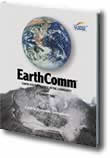This investigation will help you to:
Describe the plate-tectonic setting of your state. Refer to your world map and the map This Dynamic Planet.
- GPS Time Series from NASA
- Read about how the Earth’s crustal plates are interacting to create the San Andreas Fault. Examine a map of the Earth’s crustal plates.
- Examine diagrams that show the plate movements that create the Cascade Range.
- Study a San Francisco Bay / Monteray Bay area map that shows how the topography of the land has been impacted by the San Andreas fault system.
Recently, new forms of life have been discovered at mid-ocean ridges. They thrive in the presence of superheated, mineral-rich water. This life does not depend upon the Sun for energy, but instead upon the energy and matter from Earth's interior. How has life evolved in such environments?
- Follow your curiosity of black smokers by visiting this site. It includes images and information about lifeforms at the hydrothermal deep sea vents.
- This site contains several photos of the strange creatures which inhabit the far reaches of the ocean floor.
- Good information about life at sea vents. (See Expedition 2).
- Information about black smokers and activity along mid-ocean ridges.
- The REVEL Project
Cascades Eruptions During the Past 4000 Years, by USGS
Figure showing the eruptions of Cascade volcanoes during the last 4000 years.
Cascades Volcano Observatory, by USGS
This web site focuses on hazards, activity, history, and monitoring of volcanoes.
"Understanding Plate Motions" - from This Dynamic Planet, USGS
This site reviews the types of plate boundaries and the basics of plate motions.
"Main types of plate boundaries" from This Dynamic Earth, USGS
Artist's cross section illustrating the main types of plate boundaries.
Plates on the Move - American Museum of Natural History
Brief overview of the types of plate motions. Includes good schematic drawings of each type.
"The Action is at the Edges!" - USGS
Understanding Plate Motion - USGS
Explains the driving force behind plate tectonics. Click to view an animation of sea-floor spreading.
"Convergent Plate Boundaries" - USGS
Explains why plates are subducted at convergent plate boundaries and what happens to them once they are subducted.
"Cascade Range Volcanoes and Volcanics" - USGS Cascades Volcano Observatory
An example of an oceanic-continental plate boundary is the Cascade Range in the Western United States. Volcanoes are formed along the US coast as the oceanic Juan de Fuce plate plunges below the continental North American plate. This web site provides an in-depth review of the geologic history of the Cascade volcanoes.
Kick 'Em Jenny, West Indies
The collision of two oceanic plates can create areas of intense volcanic activity. Learn more about volcanoes formed in this manner.

